Operational Models
The CALP Network’s State of the World’s Cash Report identifies different types of operational model, including consortia and alliances, shared cash delivery mechanisms, single agency cash delivery, and integration of systems.
“The overall structure through which agencies work jointly…to deliver cash and voucher programming…in situation response and analysis, program design and implementation.”
Our working definition of an operational model.
Scaling up CVA offers opportunities to transform how humanitarian aid is delivered. It has implications for the roles of different agencies within various operational models, and the potential for models to link to social protection systems. It will also impact the nature of partnerships with financial service and technology providers, and how different models interact with other forms of assistance, beyond cash.
Current priorities
Since late 2016, the CALP Network has been coordinating a learning agenda to help answer these questions:
- What operational models are available to agencies implementing CVA?
- How do different models improve the efficiency, effectiveness and accountability of CVA in different contexts?
- Which operational models are most appropriate in which contexts?
We will continue to collate and disseminate the evidence base for operational models.
We are also a partner in the Cash Monitoring, Evaluation, Accountability, and Learning Organizational Network (CAMEALEON) consortium, led by Norwegian Refugee Council, which is responsible for independent monitoring and evaluation of WFP’s Multi-Purpose Cash Assistance (MPCA) in Lebanon. This includes research and analysis regarding value for money and accountability in the operational model.
Featured content

Operational Models: Accountability to affected people
Webinar

MEAL in Emerging Operational Models
Webinar

CTP Operational Models Analytical Framework
Guidelines and Tools
The State of the World’s Cash Report launched by the CALP Network in February 2018 highlights trends in the uptake of various operational models for the delivery of cash at scale in humanitarian response. Current decision making on the choice between these various operational models is highly influenced by context, and by the policies and approaches of donor agencies. Decision making on...
Thematic lead
Latest

Is Cash Transfer Programming ‘Fit for the Future’? – Final Report
Report
This report presents the results of a 2013 research study entitled, Is Cash Transfer Programming ‘Fit for the Future’? The research was commissioned by the the CALP Network and undertaken by the Humanitarian Futures Programme (HFP), King’s College London. The project intends to understand...
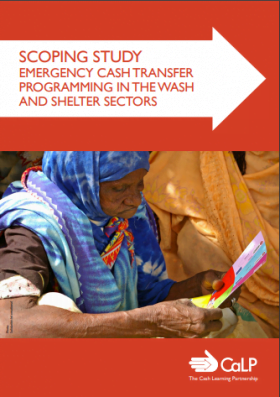
Scoping study – Emergency cash transfer programming in the WaSH and shelter sectors
Report
Over the past few years, the dialogue on cash transfer programming has progressed beyond initial debates about whether distributing cash and vouchers is a valid response modality at all to a general acceptance of their added value in appropriate contexts. Beyond the livelihoods and food...

Is Cash Transfer Programming ‘Fit for the Future’? – Annexes
Report
This Annex Package contains the full set of products developed in the course of a 2013 research study entitled, Is Cash Transfer Programming ‘Fit for the Future’? The research was commissioned by the Cash Learning Partnership (the CALP Network) and undertaken by the Humanitarian Futures Programme...

The CALP Network Level 2 Training – Module 1 – An Introduction to CTP
Guidelines and Tools
The objective of the Level 2 training is to strengthen the capacity of humanitarian actors in cash transfer programme design and implementation, to share recent research and learning, and encourage advocacy, institutionalisation and coordination in cash transfer programming (CTP). This training follows...

Unconditional Cash Assistance via E-Transfer: Implementation lessons learned – Winterization support via CSC bank ATM card
Report
This document looks at the lessons learned from the Danish Refugee Council’s e-transfer programme designed to provide cash assistance to Syrian refugees in Lebanon using the CALP Network’s guidelines on e-transfers in emergencies as a point of reference for assessing adherence to best practices.

The CALP Network Level 2 Training – Module 2 – When to use cash transfers?
Guidelines and Tools
The objective of the Level 2 training is to strengthen the capacity of humanitarian actors in cash transfer programme design and implementation, to share recent research and learning, and encourage advocacy, institutionalisation and coordination in cash transfer programming (CTP). This training follows...
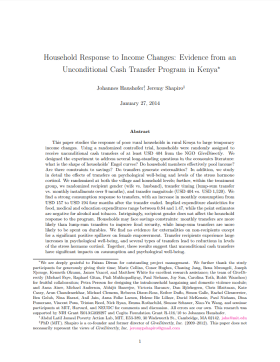
Household Response to Income Changes: Evidence from an unconditional cash transfer program in Kenya
Report
This paper studies the response of poor rural households in rural Kenya to large temporary income changes. Using a randomized controlled trial, households were randomly assigned to receive unconditional cash transfers of at least USD 404 from the NGO GiveDirectly. We designed the experiment to address...

Cash Emergency Preparedness (CEP) Assessment: Myanmar
Policy paper
Cash transfer programming (CTP) in emergencies is not new in Myanmar, with the first examples going back at least to Cyclone Nargis in 2009. CTP has also been used in humanitarian settings such as Kachin State. However, CTP is not yet being widely used for the current conflict context in Rakhine State due...

Guidelines for Public Works Programmes: Cash‐, Voucher‐ and Food-for‐Work
Guidelines and Tools
The Food and Agriculture Organization of the United Nations (FAO) manages public works programmes to provide transfers to vulnerable, food-insecure and/or crisis-affected households in return for the provision of labour (particularly through labour-intensive construction and...
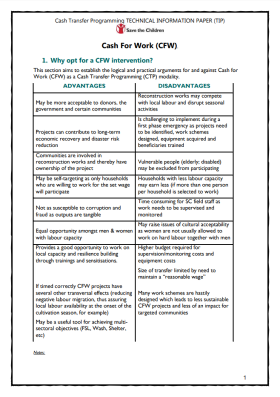
Cash Transfer Programming Technical Information Paper: Cash for work
Policy paper
This short and practical technical information paper published by Save the Children provides top-line guidelines for setting up cash for work (CFW) interventions. It includes: – Why opt for CFW intervention? – Planning for CFW – Implementing CFW – What are donors saying?
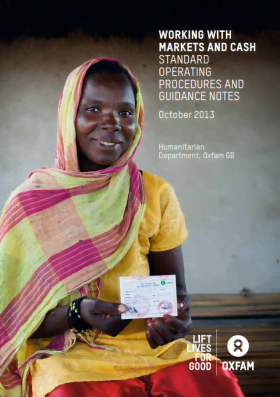
Working with Markets and Cash – Standard operating procedures and guidance notes
Guidelines and Tools
The purpose of these standard operating procedures (SOPs) is to provide humanitarian teams, across the different departments and sectors, a structured overview of how CTPs can be designed and implemented within Oxfam’s humanitarian programmes. It is meant to improve the working of a team by giving...

Predicting the Cost and Impact of Cash Transfer Programmes: The power of microsimulation tools
Policy paper
Oxford Policy Management has recently published a briefing note on using a micro-simulation tool to predict the cost and impact of cash transfer programmes. Cash transfers to households are becoming an increasingly common policy instrument for reducing poverty in some countries of sub-Saharan Africa. This...
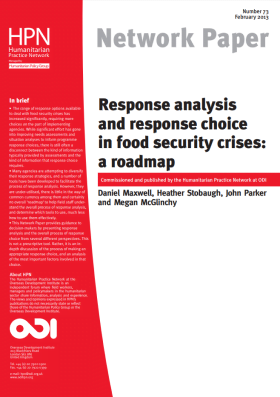
Response Analysis and Response Choice in Food Security Crises: A roadmap
Guidelines and Tools
The term ‘response analysis’ implies that response choices are made solely on the basis of evidence and analysis. However, many factors contribute to how agencies select a response, and ‘response choice’ does not always involve an evidence-based, analytical process. Recent research by The...

Cash Preparedness in Senegal: Cash Transfer Mechanisms
Report
Recognizing the growing importance of cash-based responses in humanitarian interventions and building on its own experience of implementing cash transfer programs through local partner organizations in Senegal in 2010 and 2012, Oxfam America sought to hire a consultant to determine the most feasible...
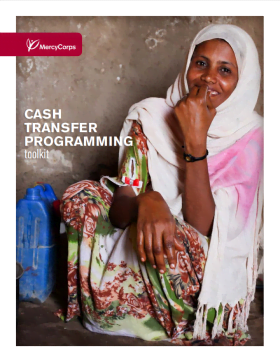
Cash Transfer Programming Toolkit
Guidelines and Tools
The Cash Transfer Programming (CTP) Toolkit is a basic guide to cash transfer programming in emergency response and early recovery settings. The publication is based upon best practiced and practical experience from Mercy Corps programmes. The Toolkit provides general guidance for CTP, as well as...
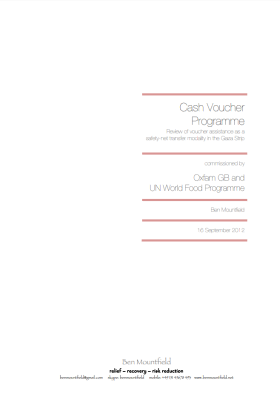
Cash Voucher Programme: Review of voucher assistance as a safety-net transfer modality in the Gaza Strip
Report
This review commissioned by Oxfam GB and WFP, looks at the effect of the Cash Voucher Project of WFP / Oxfam / Ma’an (CVP) on beneficiaries in Gaza. The review studies the impact on beneficiary diets and interviews beneficiaries to obtain their opinion on cash vouchers over in-kind food aid. The review...

Logistics and Administration Guideline for Cash Based Interventions – Annexes
Guidelines and Tools
These annexes are designed to be used alongside the Logistics and Administration Guideline for Cash Based Interventions, which aims to support logisticians and administrators to successfully support cash based interventions (CBIs) and to help technical departments too. The annexes include: a the CALP...
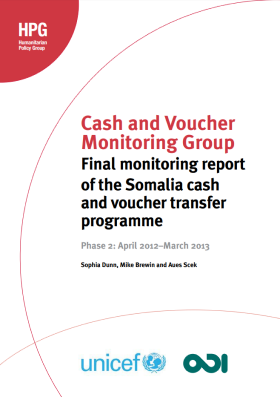
Final Monitoring Report of the Somalia Cash and Voucher Transfer Programme
Report
This report presents the findings of Phase 2 of a monitoring exercise of the Cash and Voucher Monitoring Group (CVMG), a unique partnership involving non-governmental organisations (NGOs) providing cash-based interventions in response to famine and humanitarian emergencies in South Central Somalia. It...

Impact Evaluation of Cash and Food Transfers for the Seasonal Emergency Safety Net in Hajjah and Ibb Governorates, Yemen Endline Report
Report
This report is the final impact evaluation of the World Food Programme’s Cash and Food transfer program in Yemen. The program operated in Hajjah and Ibb governorates within the larger Emergency Safety Net (ESN), which provides assistance to qualifying households in rural Yemen. The report details the...
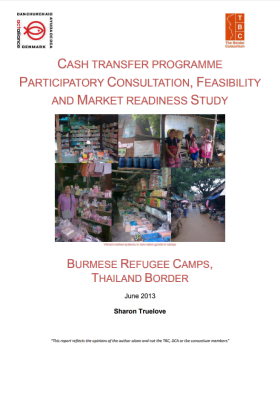
Cash Transfer Programme Participatory Consultation, Feasibility and Market Readiness Study: Burmese refugee camps, Thailand border
Report
This report is a participatory consultation, cash feasibility and market readiness study of the Burmese refugee camps on the Thailand border. It is a rapid, snap shot guide as to whether the conditions in two contrasting camps out of the full nine camps are conducive to a switch from the current ration...
